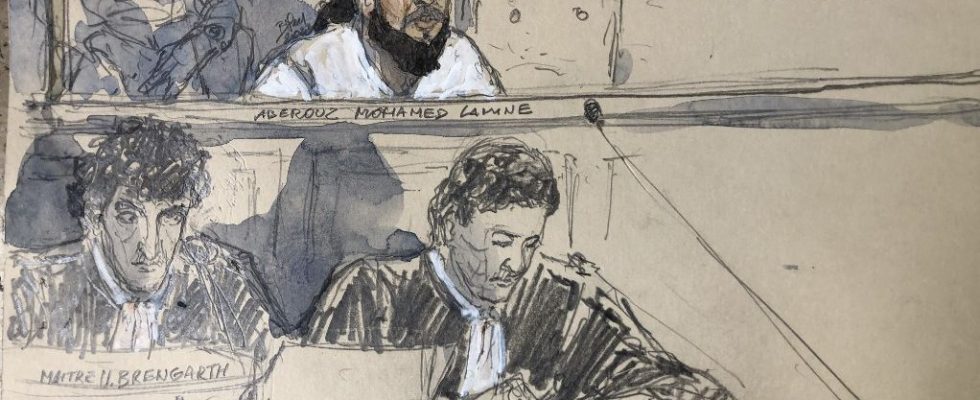At the specially constituted assize court,
Doctor Olivier Pascal summarizes the position of the genetic fingerprinting experts called to testify in this case. “We can’t give you anything, neither to the prosecution nor to the defense,” regrets this Friday morning the president of Ifeg, a Nantes laboratory which analyzes the seals sent by the investigators in the hope of finding there traces of DNA. His explanations and those of his colleague from the Paris forensic laboratory, Florence Fournier, were nevertheless eagerly awaited by the specially composed assize court before which Mohamed Lamine Aberouz, 30 years old, is being tried. Because if the accused, who denies the facts, has been on trial for five days for “complicity in the assassination of a person holding public authority”, it is in particular because his DNA was found on the couple’s laptop. police officers, killed by Larossi Abballa at their home.
It was “a technical and scientific field police service” which took the samples from the Packer Bell brand machine as well as from the terrorist’s car, Florence Fournier said. To do this, they use “a cotton swab soaked in physiological serum”. All you need to do is “brush the sampling area to recover as many cells as possible,” continues the expert. The swabs were then sent to the Paris forensic laboratory for analysis. On the computer, the experts highlighted the genetic profiles of the two victims, Jean-Baptiste Salvaing and Jessica Schneider, as well as that of Larossi Abballa.
“M2”
But they also found, on the right wrist rest of the family computer, and on the seat belt of the front passenger seat of the terrorist’s Renault Clio, an unknown trace, numbered “M2”. It is a “pure profile”, underlines Florence Fournier. That is to say, this trace has not been mixed with that of another person. It is compared with those contained in the Fnaeg (National Genetic Fingerprint File). And in December 2017, a year and a half after the events, the results fell: this DNA is that of Mohamed Lamine Aberouz, who had been indicted in September 2016 for failure to report a terrorist crime in another case and placed in detention provisional.
His DNA was taken on this occasion. The accused always claimed that he was in a prayer room on the evening of the crime. An alibi that no witness has yet been able to confirm. How, then, did his DNA end up on the computer? “I cannot say why these cells were present on the swab when it was sent to us” by the police, explains the expert cautiously.
The hypothesis of a DNA transfer not “excluded”
Mohamed Lamine Aberouz’s defense puts forward the hypothesis of a “transfer” of DNA and not a “primary contact”. Larossi Aballa could have recovered his childhood friend’s DNA, either by shaking his hand or by touching a part of his car on which the accused’s genetic profile was found. The terrorist then allegedly deposited his DNA by manipulating the victims’ PC. His lawyers, Mes Vincent Brengarth and Nino Arnaud, want as proof that no other DNA trace of their client was found, neither in the victims’ house, nor on the murder weapon, a 39-inch butcher’s knife. cm.
A hypothesis that “does not totally exclude” Florence Fournier, although she is not the most privileged. Doctor Olivier Pascal did not say anything else on the stand. For him, this hypothesis of a “secondary transfer” is “very theoretical”. “There are not many cases where we have been able to prove it,” he notes, adding that it was however impossible to formally “exclude” it. “We will never be able to scientifically conclude that there is a secondary transfer,” he regrets. Before concluding: “Scientifically, we have no evidence to go in one direction or another. » The expert therefore leaves it to the court to interpret these results. DNA, he recalls, “is only an element of investigation. We contribute a small part of it, but it’s up to you to put the pieces together.”

